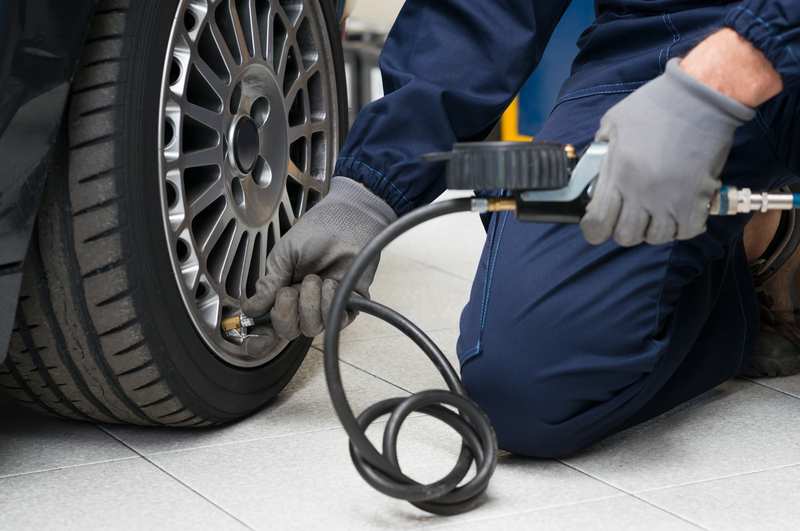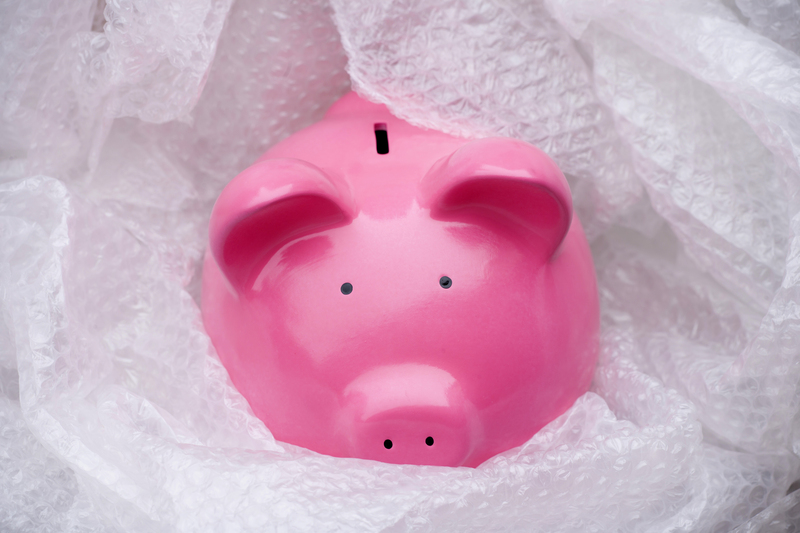Why Moving Your Piano By Yourself Could Cost You More Than You Think
When it's time to move to a new home, many people consider cutting costs by handling the process themselves. While hauling regular furniture can be challenging, relocating a piano is a monumental task that should never be underestimated. If you're contemplating a DIY piano move, you may assume you'll save money. However, this decision can come with hidden risks and expenses that often surpass the cost of hiring professionals. In this comprehensive article, we'll explore the real costs of moving your piano by yourself--from financial expenditures to potential safety hazards--and why trusting experts is the smarter, more cost-effective choice.

The True Value of Your Piano
Pianos are intricate instruments. Whether it's a grand piano, upright, or baby grand, the structure comprises thousands of complex parts. In many cases, the instrument also holds sentimental value, historical significance, and financial worth. Attempting a DIY move places all these at risk.
- Acoustic pianos can weigh between 300 to 1,200+ pounds
- Pianos are not only heavy but also unbalanced and awkwardly shaped
- Delicate components can be irreparably damaged with a single mistake
- Any damage can devalue your piano significantly or ruin its tonal quality forever
Understanding What Makes Pianos Hard to Move
Moving a piano is not just a matter of brute force. These instruments are heavy yet delicate, and their bulk makes them difficult to maneuver through tight spaces. Moving a grand piano is particularly challenging because of its shape and size. Upright pianos may seem easier, but they still contain intricate internal mechanics and dense frames that make the task grueling and risky for untrained movers.
The Hidden Costs of DIY Piano Moving
At first glance, moving your piano by yourself appears to be a money-saving endeavor. However, consider the cascade of potential expenses that can make this choice far more expensive in the long run:
1. Equipment Rental Costs
A successful piano move demands special equipment:
- Piano dollies with locking wheels
- Straps and harnesses designed for heavy objects
- Protective blankets and padding
- Skid boards for stairs and uneven surfaces
- Moving ramps strong enough to support 500+ lbs.
The rental costs for this equipment can quickly add up--often $100 to $300 or more for a single day. Furthermore, using the wrong equipment (or no equipment) almost guarantees damage or injury.
2. Risk of Physical Injury
One of the most overlooked expenses in a self-move is the potential for serious injury:
- Back, neck, and shoulder injuries from improper lifting
- Finger, hand, and foot crush injuries from dropping the piano
- Slips and falls, especially on stairs or uneven floors
- Long-term chronic pain resulting in lost wages or medical bills
According to the Occupational Safety and Health Administration (OSHA), musculoskeletal injuries are among the most common workplace hazards for movers. When you try to move a piano yourself, you don't have the training or techniques that professionals use to prevent these accidents.
3. Damage to Your Piano
This point cannot be overstated. The cost of repairing a damaged piano can be astronomical:
- Tuning and revoicing: $100 - $500
- Fixing broken keys, hammers, or strings: $200 - $1,000+
- Case and finish repair: $300 - $2,000+
- Irreparable internal frame damage: may require full replacement
And if the instrument is antique or a family heirloom, no amount of money can truly restore its original value or sentimental worth.
4. Damage to Walls, Floors, and Property
Pianos are difficult to navigate around corners, tight hallways, and stairs. Inexperience can cause:
- Scratched flooring and carpet damage
- Gouged door frames and dented walls
- Broken banisters and crushed tiles
- Repair costs that often exceed several hundred or thousands of dollars
Homeowners insurance may not cover these damages if they result from a DIY move. Professional piano movers, on the other hand, are insured for precisely these situations.
5. Vehicle Rental and Misfit
Renting a truck seems straightforward, but:
- Pianos often don't fit in standard cargo vans
- Improperly securing a piano can lead to tipping and internal damage during transit
- Climate conditions inside rental vehicles can warp wood and damage tuning
A professional piano moving company will have vehicles with climate control, proper tie-downs, and ramps, minimizing shock and environmental damage to your valuable instrument.
The Unseen Price Tag: Risks That Can't Be Measured in Dollars
While financial loss is an obvious risk, there are other costs to a DIY move that can't be recovered:
- Loss of sentimental value: Damage to a family heirloom or beloved instrument can be emotionally devastating
- Missed musical opportunities: If your piano is your artistic outlet or livelihood, damage or loss of function can disrupt your musical life
- Stressful and exhausting experience: The anxiety of handling a multi-hundred-pound instrument, coordinating helpers, and worrying about potential damage
Why Professional Piano Movers Are the Real Economical Choice
Certified piano movers offer a level of expertise, equipment, and insurance that's impossible for a DIY mover to match. Here's why hiring experts can actually save you substantial money in the long run:
1. Training & Specialty Equipment
Piano movers receive rigorous training and use industry-specific tools designed to protect both your piano and your property. Their experience enables them to anticipate and handle unexpected challenges--tight corners, many flights of stairs, or weather conditions--that you might find overwhelming.
2. Insurance Protection
Professional piano moving companies are fully insured, so if the unlikely happens and any damage occurs, both your instrument and home are covered. In contrast, your insurance may not pay out for damage incurred during a DIY move. The peace of mind this offers is priceless.
3. Preserving the Life of Your Instrument
Experts understand the internal workings of all types of pianos. Their careful handling will prevent disruption to the sensitive mechanics, ensuring your instrument is playable and unaffected both inside and out.
4. Efficiency and Cost-to-Benefit Ratio
Experienced piano movers can accomplish the task efficiently, often in less time and with far less risk. When you consider what is at stake--financial, emotional, and physical--hiring professionals is not just a luxury but an investment in your piano's longevity and your peace of mind.
DIY Myths Debunked: Common Misconceptions About Moving Pianos
- "If I have a few strong friends, it will be easy."
While teamwork helps, strength alone isn't enough--skills, strategy, and proper equipment are equally vital. - "Renting a truck and dolly is all I need."
Most dollies are not rated for piano weight or balanced for their peculiar center of gravity. The wrong equipment increases risk, not reduces it. - "I'll just slide the piano across the floor."
Sliding can damage flooring, break piano legs or pedals, and cause internal misalignment. - "My homeowner's insurance will cover all damages."
Many policies have exclusions when the property owner causes damage during a move or fails to use a licensed professional. - "Pianos are tough and can withstand a bump or two."
Even a small knock can cause costly repairs or lasting damage to the delicate internal mechanisms.
What Professional Piano Moving Includes
When you hire a reputable piano moving company, you benefit from a full-service approach:
- Pre-move inspection and assessment
- Disassembly of parts if necessary (pedals, legs, lids, etc.)
- Secure wrapping with moving blankets and custom padding
- Use of professional skids, ramps, and dollies
- Safe navigation of staircases, narrow halls, and tight corners
- Precise placement at the new location
- Assistance with reassembly and initial tuning after the move
- Comprehensive insurance coverage for instrument and property
This level of care ensures your piano retains its value, quality, and appearance, minimizing any disruption to your playing schedule or enjoyment.

Conclusion: The Smart Way to Move Your Piano
Attempting a DIY piano move is appealing to many because of the perceived cost savings, but the hidden dangers and unforeseen expenses can make it a far more expensive proposition than hiring professionals. By risking your health, your property, and the integrity of your cherished instrument, you could end up paying in repairs, medical bills, lost time, and emotional distress.
Professional piano movers provide expertise, safety, insurance, and peace of mind. When you factor in all possible costs, it becomes clear that relying on specialists is the wise and economical choice. Don't let a DIY move devalue what might be your home's centerpiece. Make the smart investment and protect your piano for generations to come.
Frequently Asked Questions: Moving Your Piano
- How much does it cost to hire a piano mover?
The price typically ranges from $200 to $1,000+ depending on the piano size, distance, and complexity of the move. Compared to potential damage costs, this is a wise investment. - Is it ever safe to move a piano without professionals?
Unless you have professional-grade equipment and extensive moving knowledge, DIY piano moves are risky. Even then, insurance concerns remain. - Should I tune my piano after a move?
Yes! Moving can affect a piano's tuning, no matter how carefully it's handled. Arrange for a professional tuning after the move for best sound. - Can I move a digital piano by myself?
Digital pianos are lighter and less fragile but still require care. Use two people, proper lifting technique, and original packaging if available.
If you value your piano and your wellbeing, avoid the hidden costs of a DIY move. Trust the experts to keep your instrument--and your peace of mind--intact.



